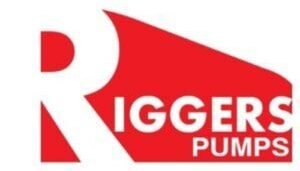A triplex pump and piston pump are closely related types of positive displacement pumps, but they differ in their specific design and application. Here’s a breakdown of each:
Triplex Pump:
- Operating Principle: A triplex pump is a type of positive displacement pump that uses three pistons or plungers to generate high-pressure fluid flow. It falls under the category of reciprocating pumps because it uses reciprocating motion to move fluid.
- Design: Triplex pumps are characterized by having three cylinders (hence the name “triplex”) arranged in parallel or in a triangular configuration. Each cylinder contains a piston or plunger that moves back and forth within the cylinder.
- Functionality: As the pistons or plungers move back and forth, they draw in fluid through one side (suction stroke) and then expel it at high pressure through the discharge side (compression stroke). This action is typically driven by an external power source, such as an electric motor or a diesel engine, which provides the necessary mechanical force to move the pistons.
- Applications: Triplex pumps are renowned for their capability to generate high pressures, making them ideal for applications that demand high-pressure water or other fluids. Triplex pumps are commonly used in high-pressure cleaning across various industries, such as industrial cleaning and surface preparation, water blasting, pressure testing, and hydraulic systems in sectors like oil and gas, manufacturing, and construction. High-pressure cleaning is particularly effective in removing stubborn contaminants, preparing surfaces for coatings, and maintaining equipment.
Piston Pump:
- Operating Principle: A piston pump is another type of positive displacement pump that uses one or more pistons (or plungers) to move fluid. It operates on the same principle as the triplex pump but may have a different number of pistons and cylinders.
- Design: Piston pumps can have varying designs, including single-cylinder pumps (simplex), two-cylinder pumps (duplex), and three-cylinder pumps (triplex), among others. Each cylinder contains a piston that moves back and forth to create pressure.
- Functionality: Similar to a triplex pump, a piston pump uses reciprocating motion to draw in fluid during the suction stroke and then expel it at high pressure during the compression stroke. The number of pistons determines the flow rate and pressure capacity of the pump.
- Applications: Piston pumps are used in applications requiring precise control over flow rate and pressure. They are commonly found in hydraulic systems, automotive engines (as fuel pumps), high-pressure industrial applications (such as chemical processing and oil and gas extraction), and in some cases, water jetting applications.
Key Differences:
- Number of Pistons: A triplex pump specifically refers to a pump with three pistons or plungers, whereas a piston pump can have varying numbers of pistons (e.g., simplex, duplex, triplex, etc.).
- Configuration: Triplex pumps are typically arranged with three cylinders in a specific geometric configuration (often triangular), whereas piston pumps can vary in their cylinder arrangement depending on the design and application.
- Applications: Triplex pumps are often chosen for applications where continuous high-pressure output is needed, such as in high-pressure cleaning and hydraulic systems. Piston pumps are chosen for a wide range of applications where precise control over pressure and flow rate is required.
In summary, while both triplex pump and piston pump are types of positive displacement pumps that use reciprocating motion to move fluid, the term “triplex pump” specifically refers to a pump with three cylinders and pistons or plungers. They are valued for their high-pressure capabilities and are used in demanding applications where consistent and reliable performance under pressure is crucial

